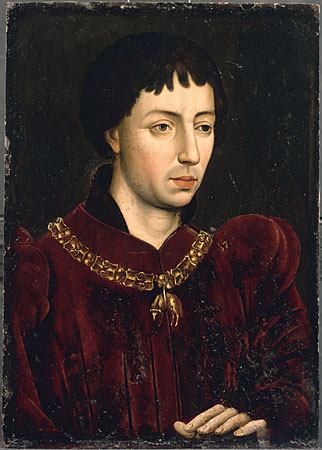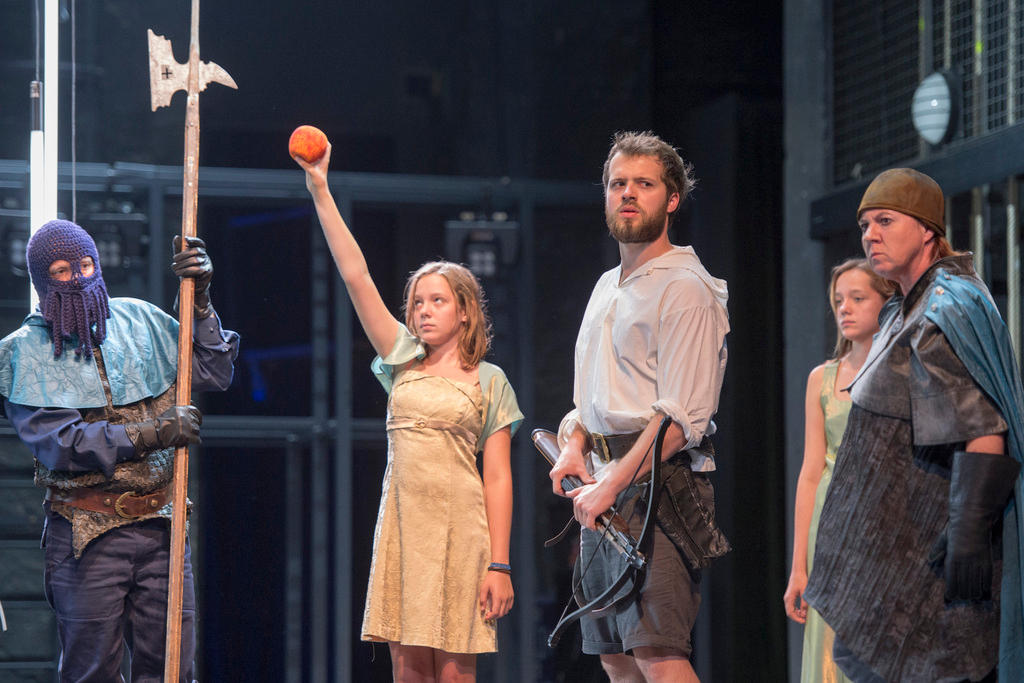World rulers from Switzerland

The Habsburgs were a dynasty that shaped European history as no other has done – but they had their modest roots in Switzerland.
2008 has been designated Habsburg memorial year. It is the 900th anniversary of the first documented mention of the family name, and the 700th anniversary of the assassination – in Switzerland – of the second Habsburg king.
For most Europeans the Habsburgs are the family which for centuries held the throne of the so-called Holy Roman Empire, which later became the Austro-Hungarian Empire and ended only after the First World War. For 200 years they sat on the Spanish throne and ruled large swathes of the Americas as well. (see Key Facts)
But they have traditionally had a bad press in Switzerland; in the Middle Ages they held large amounts of land in what is now Swiss territory and came into conflict with the independent communities who were struggling to assert their own freedoms.
Over the years more and more communities came together and Switzerland gradually grew as a loose confederation, including city states like Zurich and Bern, who had different interests of their own to defend and assert.
This was the context in which the Swiss repeatedly clashed with the Habsburgs, gradually winning control over what had once been the Habsburg heartland.
The legend of William Tell, who refused to accept the dictates of the Habsburgs’ wicked governor Gessler, is a part of Swiss identity. Every year celebrations mark the key 14th century victories over Habsburg armies at Morgarten, Sempach and Näfels in the Swiss heartland.
“The House of Habsburg helped shape Switzerland,” said Economics Minister Doris Leuthard at an official ceremony to mark the memorial year. “We grew by resisting the Habsburgs.”
Another view
But this is only one side of the coin. The organisers of the Habsburg Year hope to set the family’s achievements in perspective.
The celebrations are concentrated in the northern canton of Aargau, where the Habsburgs had their first castle and where they still owned a last strip of territory up until 1797.
The small town of Brugg, near the original Habsburg castle, is housing one of several exhibitions.
“We want to show a piece of Aargau history which people aren’t so familiar with, because the Habsburgs tend to be portrayed as the baddies in Swiss history,” Peter Frey, one of the curators of the exhibition, told swissinfo.
“People here in Aargau learn the same history as everyone else in Switzerland, so they are really interested to see another side.”
The forefathers of the Habsburgs probably came from Alsace, but at the beginning of the 11th century one of them, Count Radbot, settled close to what is now Brugg and ruled his lands from there. According to the story Radbot had lost his hawk – Habicht in German – while hunting. He found it on a hill which seemed perfect for a castle, which he built and named after the bird.
But it was only about 80 years later that the name of the castle was applied to the family: it first occurs in a document of 1108 when count Otto von Havichsberg joined a campaign against the Hungarians.
They were originally minor nobles just like many other families, but by a combination of skill and luck they acquired more and more land and power. In 1273 Rudolf von Habsburg became the first of the family to be elected German king, the supreme ruler of the empire.
By the time he died in 1291 he had managed to secure much of the territory of today’s Austria for his family, moving the centre of their power eastwards for ever.
“He was a skilful diplomat, an experienced fighter, a charismatic personality and a pragmatist, in other words all the qualities needed to be a successful politician,” said Frey.
The Habsburgs and the Swiss
The small communities in central Switzerland who wanted to govern themselves were faced with a paradoxical situation. It was only the emperor who could grant them the freedom to do so, but the Habsburgs as major landholders in the region had an interest in curbing their freedoms.
When Rudolf died, the three rural communities of Schwyz, Unterwalden and Uri took an oath of mutual support in case his successor tried to take away their freedoms. This oath is traditionally regarded as Switzerland’s founding act.
Luckily for the Swiss, at this time the empire did not yet fall automatically into Habsburg hands. Rudolf’s son Albrecht became German king in 1298, but was murdered by his nephew over an inheritance in 1308. By the time the Habsburgs started succeeding each other, the Swiss had more or less thrown them out.
But Frey pours cold water on the heroic accounts of Swiss victories written by chroniclers from the winning side.
“In reading Swiss history you always have to reverse the figures. A people’s army whose men can be called up is always stronger than an army of knights. When we hear that 400 Swiss beat 1,500 Habsburg troops, in actual fact it was probably 1,500 Swiss who beat 400 Habsburgs. You’ll always win if there are more of you.”
Furthermore, the Swiss and the Habsburg perspectives were somewhat different. The Habsburgs were extremely successful in enlarging their lands to the east. Their holdings in the west thus became less important.
When in 1415 the Swiss Confederates seized most of what is now canton Aargau, including Habsburg castle, it meant a certain loss of prestige but not much more.
“It was just a tiny scrap of land that they had lost, of little significance,” says Frey.
For the people of Aargau, they merely swapped Habsburg governors for Swiss ones.
Surviving Swiss connection
After 1415 the Habsburgs still owned only the Fricktal area along the Rhine. One much later ruler is still respected there: Maria Theresa (Theresia in German), empress from 1740 to 1780.
“Until recently at least lots of girls in the Fricktal were called Maria Theresia,” says Frey.
“The reforms she introduced were very beneficial for the area. For example, she introduced obligatory fire insurance, and when the Fricktal became part of canton Aargau in 1803 part of the agreement was that fire insurance must be made obligatory in the whole canton. That’s why even today Aargau has the lowest insurance premiums. The fund has been invested for 200 years!”
And the connection went on: The hearts of the last crowned members of the dynasty, Emperor Karl I and his wife Zita, are buried in the Habsburg vault in Muri monastery, founded by Karl’s distant ancestor nearly 1,000 years ago.
swissinfo, Julia Slater
The so-called Holy Roman Empire was a union of territories in Central Europe lasting from the Middle Ages until it was dissolved by Napoleon in 1806.
It was centred on present-day Germany and Austria but at times it extended eastwards into part of what is now Poland, and westwards into the Netherlands, and also included parts of modern France and Italy.
The territories making up the empire included kingdoms, principalities and free cities. These had greater or lesser autonomy at different times.
Originally the emperor was an elected position, but in practice was held continuously by the Habsburgs from the 16th century onwards.
After the dissolution of the empire, the Habsburgs continued to rule Austria and then Austria-Hungary until that empire collapsed in 1918.
Otto von Habsburg (born 1912) is the current head of the House of Habsburg.
c 963 Birth of Guntram the Rich, supposed to be the founder of the dynasty
c 1020 Habsburg Castle built
c 1027 Founding of Muri monastery in canton Aargau
1108 Family name Habsburg first appears
1264 Inherit territories in eastern Switzerland
1273 Rudolf I becomes German king; seizes Austrian lands
1291 Rudolf dies
1308 Rudolf’s son Albrecht I murdered near Brugg
1309 Königsfelden founded near site of murder; used as Habsburg burial place
14th century – Swiss gradually drive out Habsburgs
1415 Swiss seize Habsburg heartland
1483-1806 Position of Holy Roman Emperor held by Habsburgs
1504-1700 Spain (and Spanish lands in Americas) ruled by Habsburgs
1806-1918 Austrian empire, subsequently Austro-Hungarian empire, ruled by Habsburgs.

In compliance with the JTI standards
More: SWI swissinfo.ch certified by the Journalism Trust Initiative













You can find an overview of ongoing debates with our journalists here . Please join us!
If you want to start a conversation about a topic raised in this article or want to report factual errors, email us at english@swissinfo.ch.